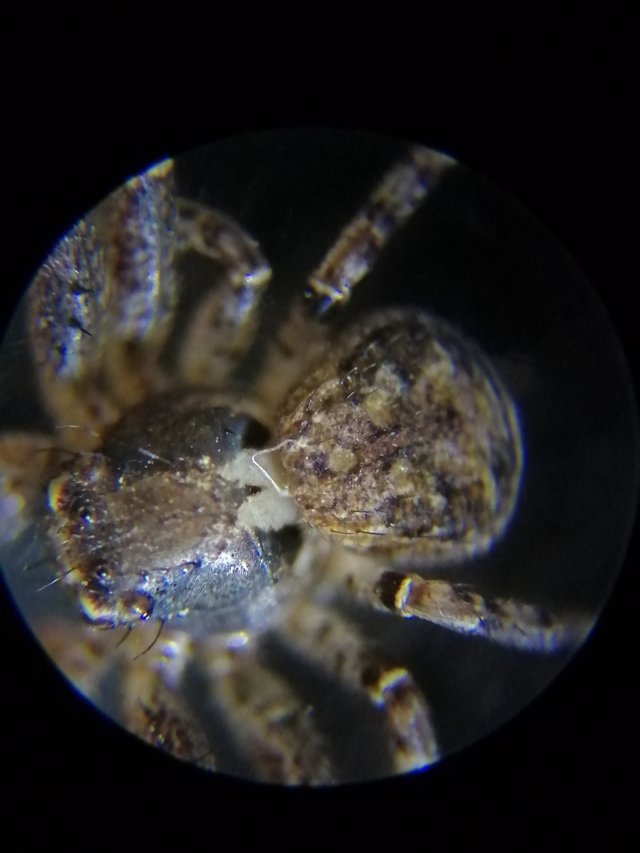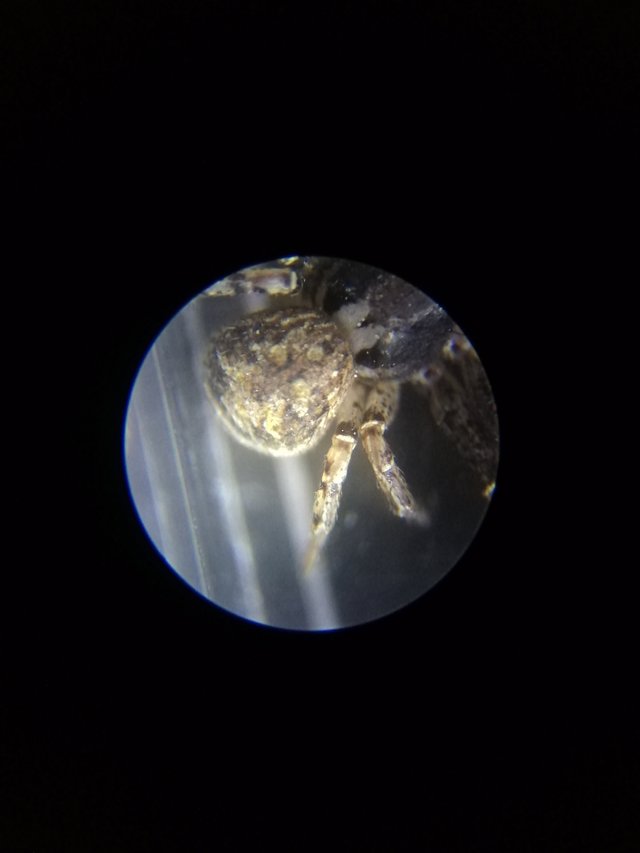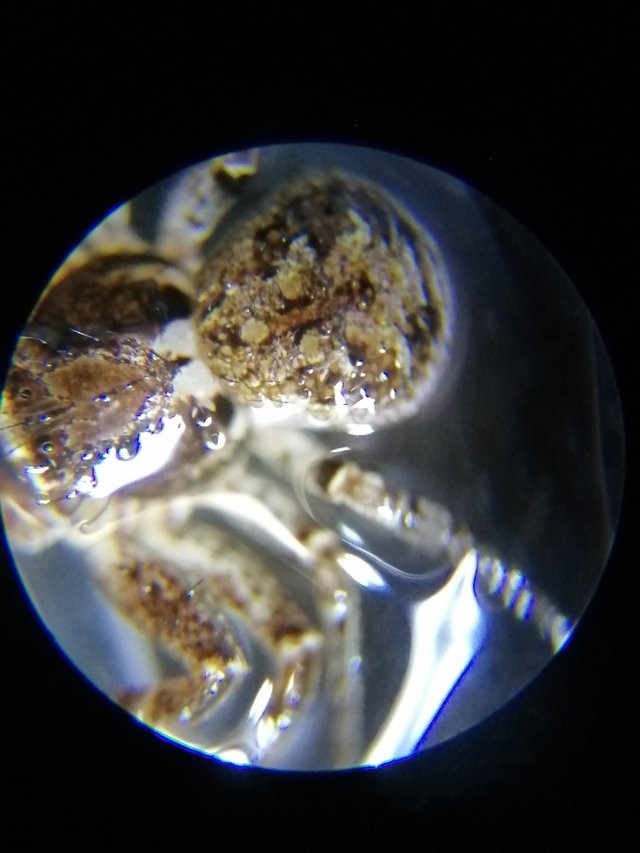Hello friends of steemit, today as always I bring a very interesting post because it captures a small spider that is common in areas with low vegetation and we could even find them in the garden of our homes! My little experiment consists of seeing the anatomy of the spider explaining each part and also knowing why they are fantastic animals!👩💻👨🎓👨🏫
Hola amigos de steemit hoy como siempre traigo un post muy interesante porque capture una pequeña araña que es comun de zonas con vegetacion baja y hasta podriamos encontrarlas en el jardin de nuestros hogares! mi pequeño experimento consiste en ver la anatomia de la araña explicando cada parte y tambien conocer porque son animales fantasticos!🤯🧠

THE ARACHNIDS🕷🕸/LOS ARACNIDOS👨🏫


I was one of the people who, before doing my studies in biology, thought that a spider was an insect like an ant, and that is not the case, spiders are in an order other than insects, this order is called: (Araneae) , here we can find more than 46 thousand species of spiders spread over almost the entire planet! They are cosmopolitan species that are much more abundant in the tropics. These animals have a pair of "pincers" that are called cheliceros and stand out in them because they have glands that produce poison and are used to prey or defend themselves!👨🎓👨🏫
Yo era una de las personas que antes de realizar mis estudios en la biologia pensaba que una araña era un insecto como una hormiga, y no es asi las arañas estan en un orden a parte de los insectos, esto orden es llamado: (Araneae), aqui podemos encontrarnos mas de 46mil especies de arañas repartidas en casi todo el planeta! son especies cosmopolitas que son mucho mas abundantes en las zonas tropicales, estos animales tienen un par de "pinzas" que son llamadas queliceros y destacan en ellos porque tienen unas glandulas que producen veneno y es usada para depredar o defenderse!🙋♂️🧏♂️


Another characteristic that defines a spider and that we do not see in another animal on the planet is that they have an abdomen with a hole where they produce a "web". This web is one of the most resistant materials on the planet and that they have various uses, the spider can use the cloth to: make traps and capture their prey, use it as a means of transport through the wind or build nests and shelters! the only continent where we do not get spiders is in the Antarctic of rest on the whole planet there! they are predatory species mostly small animals! do you know what arachnophobia is ??? well if you see this post and feel rejection then you suffer from arachnophobia !!!🕵️♀️🕵️♂️
Otra caracteristica que define a una araña y que no vemos en otro animal del planeta es que tienen un abdomen con un orificio donde producen una "tela" esta tela es uno de los materiales mas resistentes del planeta y que tienen diversos usos, la araña puede usar la tela para: realizar trampas y capturar a sus presas, usarla como medio de transporte atraves del viento o construir nidos y refugios! el unico continente donde no conseguimos arañas es en la antartida de resto en todo el planeta hay! son especies depredadoras en su mayoria de pequeños animales! sabes que es la aracnofobia??? bueno si ves este post y sientes rechazo entonces sufres de aracnofobia!!!🔬🔬
ANATOMY🕷🕸/ANATOMIA👨🏫

As you can see and divided in this photo the main parts of the spider starting with the prosoma or cephalothorax the spiders have 6 pairs of appendixes that are inserted here in this area, at the same time we can see the compound eyes and the chelicerae of the spiders in the part of the front they have "two legs" that are not actually called pedipalps these false legs never touch the ground and have various functions from courtship to copulation!😃😃
Como puedes ver e dividido en esta foto las principales partes de la araña comenzando por el prosoma o cefalotorax las arañas tienen 6 pares de apendices que van insertados aqui en esta zona, al mismo tiempo podemos ver los ojos compuestos y los queliceros las arañas en la parte del frente tienen "dos patas" que en realidad no lo son que se llaman pedipalpos estas patas falsas nunca tocan el suelo y tienen diversas funciones desde el cortejo hasta copular!🕵️♀️👨🏫

Spiders have this series of false eyes that have too poor a field of vision, they do not see very well so they use pedipalps as a chemical receptor to detect prey, they also have "hairs" on their legs that capture vibrations, spiders have 8 simple eyes in total, but there are exceptions in nature as some species of spiders have good vision!👨🏫👨🎓
Las aranas tienen esta serie de falsos ojos que tienen un campo de vision demasiado pobre, ellas no ven muy bien por lo que usan los pedipalpos como receptor quimico para detectar presas, ellas tambien tienen en sus patas "pelos" que captan las vibraciones, las aranas tienen 8 ojos simples en total, pero hay excepciones en la naturaleza ya que algunas especies de aranas tienen una buena vision! 👀👀🦿🦾

The opistoma or abdomen here is where the famous ceda gland is stored, the ceda leaves the body of the spider through the "rows", at the same time the abdomen is the place where gas exchange or respiration occurs through structures called (lungs in book).
El opistoma o abdomen aqui es donde se almacena la famosa glandula de ceda, la ceda sale del cuerpo de la arana por las "hileras", al mismo tiempo el abdomen es el lugar donde ocurre el intercambio gaseoso o respiracion por unas estructuras llamadas (pulmones en libro).


